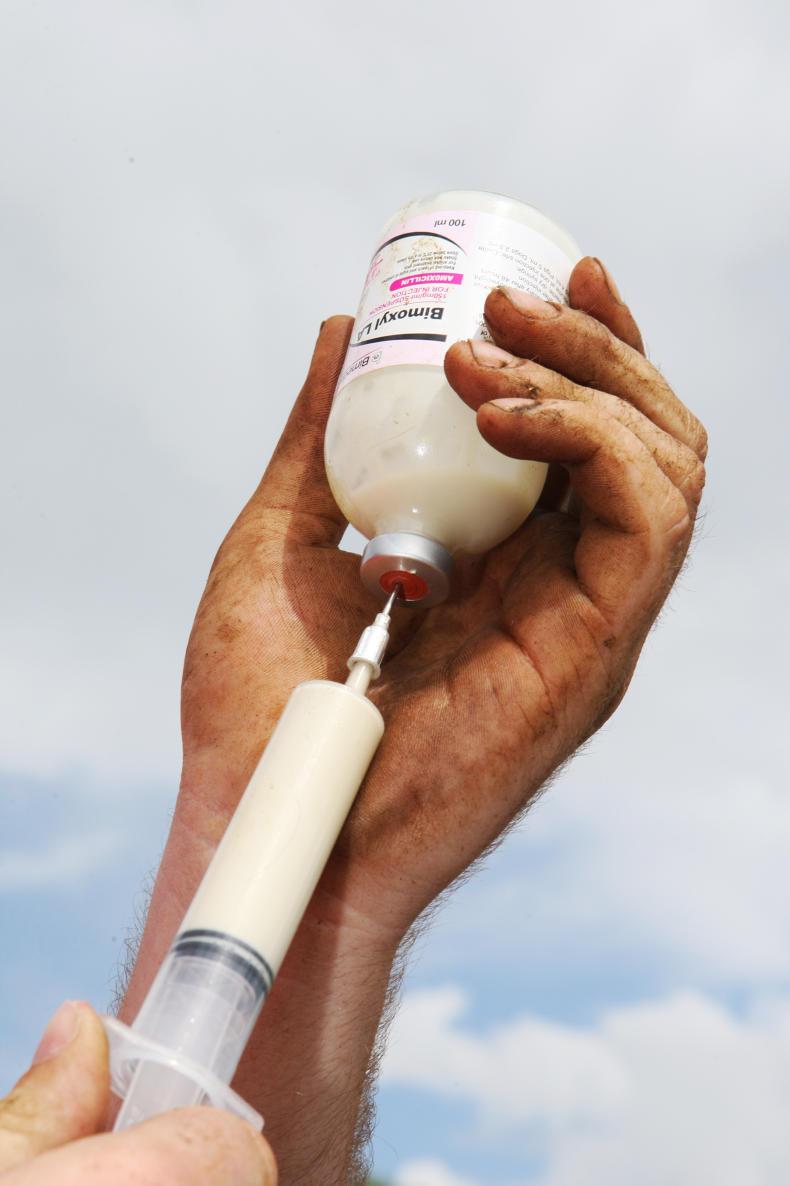Total sales of veterinary antibiotics in Europe decreased by 2.4% between 2011 and 2014, according to a report recently published by the European Medicines Agency.
Data on antimicrobial usage was submitted by the 28 EU member states and Switzerland and was expressed as milligrams active ingredient sold per population correction unit (mg/PCU) – this represents the average weight of livestock or slaughtered animals.
Overall, 25 countries provided data for the full three-year period, with a fall in sales of more than 5% observed in 10 of these countries and an increase of more than 5% seen in five countries.
In Ireland, annual sales of veterinary antimicrobial agents increased from 49.5mg/PCU in 2011 to 58.2mg/PCU in 2012. By 2014, annual sales had reduced to 48mg/PCU, representing a 3% decline over the four-year period.
Spain changed its system of collecting sales data in 2014 and it is suggested that in data prior to this, there was a “substantial underestimate” of antimicrobial sales. By excluding Spain, an overall fall in sales of 12% from 2011 to 2014 is observed in the 24 countries.
Reasons
Implementation of responsible-use campaigns, changes in animal demographics, changes in systems for collecting data, restrictions of use, increased awareness of the threat of antimicrobial resistance and setting of targets for antimicrobial sales have been cited by countries for the decline in sales.
Tetracyclines were the largest-selling group of antimicrobials with 33.4% of sales when expressed as mg/PCU. Penicillins were next at 25.5% and sulfonamides had 11?% of sales.
Antimicrobials for group treatment accounted for 91.6% of the total sales across the 29 countries. However, this varied substantially between countries from 6% to 96%. Of antimicrobials for group treatments, premixes accounted for 42.1% of sales, oral powders 31.7% and oral solutions 17.8%.
Read more
Listen: Antibiotics warning to farmers
Use of veterinary medicine next big EU issue
Total sales of veterinary antibiotics in Europe decreased by 2.4% between 2011 and 2014, according to a report recently published by the European Medicines Agency.
Data on antimicrobial usage was submitted by the 28 EU member states and Switzerland and was expressed as milligrams active ingredient sold per population correction unit (mg/PCU) – this represents the average weight of livestock or slaughtered animals.
Overall, 25 countries provided data for the full three-year period, with a fall in sales of more than 5% observed in 10 of these countries and an increase of more than 5% seen in five countries.
In Ireland, annual sales of veterinary antimicrobial agents increased from 49.5mg/PCU in 2011 to 58.2mg/PCU in 2012. By 2014, annual sales had reduced to 48mg/PCU, representing a 3% decline over the four-year period.
Spain changed its system of collecting sales data in 2014 and it is suggested that in data prior to this, there was a “substantial underestimate” of antimicrobial sales. By excluding Spain, an overall fall in sales of 12% from 2011 to 2014 is observed in the 24 countries.
Reasons
Implementation of responsible-use campaigns, changes in animal demographics, changes in systems for collecting data, restrictions of use, increased awareness of the threat of antimicrobial resistance and setting of targets for antimicrobial sales have been cited by countries for the decline in sales.
Tetracyclines were the largest-selling group of antimicrobials with 33.4% of sales when expressed as mg/PCU. Penicillins were next at 25.5% and sulfonamides had 11?% of sales.
Antimicrobials for group treatment accounted for 91.6% of the total sales across the 29 countries. However, this varied substantially between countries from 6% to 96%. Of antimicrobials for group treatments, premixes accounted for 42.1% of sales, oral powders 31.7% and oral solutions 17.8%.
Read more
Listen: Antibiotics warning to farmers
Use of veterinary medicine next big EU issue






 This is a subscriber-only article
This is a subscriber-only article










SHARING OPTIONS: